The Seasons of the Lutheran Church
Church year begins in Advent
and goes to
Christ the King Sunday at the end of Pentecost
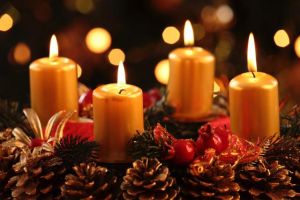
The Season of Advent
The church year in the West begins with a preparatory season called “Advent.” The word “advent” comes from the Latin word adventus, meaning “appearing” or “coming,” referring to the appearing of a great king or even a god. In Christian usage, it refers to the appearing of Jesus Christ in two ways - His first appearing as the Child born of the Virgin Mary and His second appearing in glory on the Last Day to judge the living and the dead. Advent isn’t only about getting ready for Christmas; it’s also about getting ready for Jesus’ final appearing in glory on the Last Day.
The season of Advent has its origins in France and Spain in the 4th and 5th centuries. As early as 380, the Council of Saragossa urged faithful Christians to attend church every day from December 17 through Epiphany (January 6). Early calendars in both the East and the West indicated a 40 day period of fasting, beginning on November 14. The liturgical principle is “fast before feast,” following the pattern of Lent and Easter.
Advent has four distinct Sundays themed by the readings from the holy Gospel:
- The 1st Sunday in Advent focuses on Christ’s appearing in glory with the image of His triumphal ride into Jerusalem as the messianic King.
- The 2nd Sunday brings John the Baptizer’s prophetic voice calling Israel out to the wilderness to “prepare the way of the Lord.”
- The 3rd Sunday again focuses on John the Baptizer, this time on the content of his preaching of repentance and his greatness as the forerunner of the Messiah.
- The 4th Sunday emphasizes Jesus’ immaculate conception by the Holy Spirit in the womb of the Virgin Mary.
Advent is a season of quiet anticipation and expectation. Advent is a time of sober patience. Blue or purple are the sanctuary colors for Advent. Blue is associated with Advent, suggesting hope. This association originated in Scandinavia, probably because purple dye was too expensive for churches to use. Some assemblies use purple in Advent, a color associated with royalty as the church awaits the newborn king.
The season has its own peculiar customs and traditions. One cherished tradition is the Advent wreath. This evergreen wreath with four candles is a tradition from northern Europe. Each candle stands for one of the four Sundays in Advent. The closed circle is a symbol of God’s eternality. Like the circle, our Lord is without beginning and without end. The evergreen branches represent the eternal life that is ours through the death and resurrection of Jesus Christ, a life that transcends death itself. Just as the evergreen remains alive and fresh even in the dead of winter, so Jesus fills us with new life even in death.
Other Advent customs include the Advent calendar with its little doors or pockets each concealing a gift or Scripture verse and counting the days to Christmas, and the “Jesse Tree,” depicting the family tree of Jesus as the promised Branch from the stem of Jesse (Isaiah 11:1). Advent calendars and Jesse Trees make fun family projects during the season of Advent.
Source: http://higherthings.org/myht/articles/catechesis/advent-season (Rev. William Cwirla)
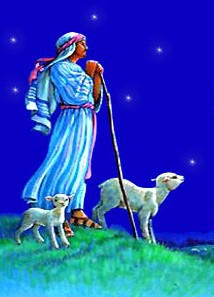
The Christmas Season
White is the sanctuary color for the Christmas Season. White calls to mind the purity of the newborn Christ and to our light and joy in him. Some churches also use Gold.
Christmas, also known as the Nativity, literally means "Christ Mass." The feast celebrates the birth and incarnation of Jesus Christ, the Son of God, on December 25. Christmastide is another name for the Christmas season, which extends from the first Vespers of Christmas Eve until the Feast of the Baptism of Our Lord.
The original meaning of Christmas? Christmas is the feast of the Incarnation, the celebration of the birth of Jesus Christ, true God and true man, as a little baby in Bethlehem, within the realm of history. While many Christians recognize Christmas as a celebration of Jesus' birth, the solemnity is also a festival of his Incarnation, that is, God becoming human in the person of Jesus. Outside of the Catholic and Orthodox Churches and a few others, the idea of Christmas as a season has nearly disappeared. Although secular traditions are fun and endearing, Christmas is primarily a Christian holy day. Even the term itself is an abbreviation of the phrase "Christ mass," which reflects the primary understanding of Christmas as a feast day within the Church year, connected to the Eucharist. Unfortunately, in recent times, celebrating Christmas with the Church has taken a backseat to food preparation, gift opening, and other festivities that, while good, are only secondary activities that are not meant to replace the primary "reason for the season": celebrating the birth of Jesus Christ. While many mention the need to put Christ back in Christmas, the need is greater than that. As an Anglican priest once noted: we need to put the "mass" back in Christmas too.
Christmastide is the name given for the time surrounding Christmas Day. In the current Catholic calendar, Christmastide lasts from Christmas Day until the Baptism of our Lord, which is the Sunday following January 6th. This time includes many other important Christian Holy Days. The 12 days of Christmas, the time from December 25th until the Epiphany (Jan. 6th), have often been recognized as a time for special feasting. In fact, Christmastide used to refer to the 12 Days of Christmas, and some still use "Christmastide" to refer to this period. In the past, the season of Christmas lasted from Christmas until Candlemas, and superstitions developed, e.g. that there was bad luck ahead for those who left Christmas decorations up after Candlemas.
Even though the Bible does not record a specific celebration of a feast of Christ's birth, the Infancy Narratives of St. Matthew and St. Luke form the basis of the Christmas celebration. Thus, the history of Christmas ultimately goes back to the miraculous virgin birth of Jesus Christ around 4 BC. At least by the time of St. Matthew and St. Luke's Gospels, Christians began to reflect on the birth of Jesus Christ, and its significance. A few of the early Church Fathers speculated about the birth of Jesus, but the actual liturgical celebration of Christmas cannot be fixed with certainty before the very early 4th century. Some scholars think that the celebration of Epiphany (originating in the East), which included the nativity and modern Christmastide themes, was celebrated much earlier (possibly late 2nd century). The celebration of Christmas uniquely as the nativity of Jesus Christ, however, originated in the West, probably in North Africa. While various 3rd century Church Fathers (including St. Hippolytus of Rome and Sextus Julius Africanus) believed Jesus was born on December 25, the earliest surviving reference to December 25th as the liturgical celebration of Christmas is in the Philocalian calendar, which shows the Roman practice in AD 336. The Apostolic Constitutions (c AD 380) mandate the celebration of Christ's birth on December 25th, and his Epiphany on January 6 (see Book V:III:XIII). The celebration of Christmas spread throughout the whole of the East and the West in the 4th century. By the fifth century, almost all of the Church was observing December 25th as the Feast of the Nativity and Epiphany on January 6th, although some Christians still kept January 6th as a holy day which included the nativity. The West was slower to embrace Epiphany, but by the fifth century Rome included it as a feast. Today, in the Western Church, the season of Christmas, called Christmastide, includes the Epiphany (the manifestation of Christ to the wise men) and the baptism of Jesus.
Christmas was universally celebrated until the Reformation, but many Protestant reformers rejected Christmas. The English Puritans were particularly hostile to Christmas and went to absurd lengths to suppress it. During the brief Calvinist reign in England, parliament forbade the celebration of Christmas, even going so far as to force shops to be open. This attitude carried over into the Americas where Christmas was outlawed or criminalized in Puritan states. For example, in Massachusetts, until the 1830s, anyone who missed school or work on December 25th was subject to a fine. During the earliest days of the USA, with the exception of Catholics, Anglicans, and Lutherans, the religious and secular celebration of Christmas would have been quite rare. Even in the 21st century, many people, for a variety of reasons, reject the celebration of Christmas.
Source:http://www.churchyear.net/christmas.html
Source: http://prayerfoundation.org/church_seasons_explained.htm
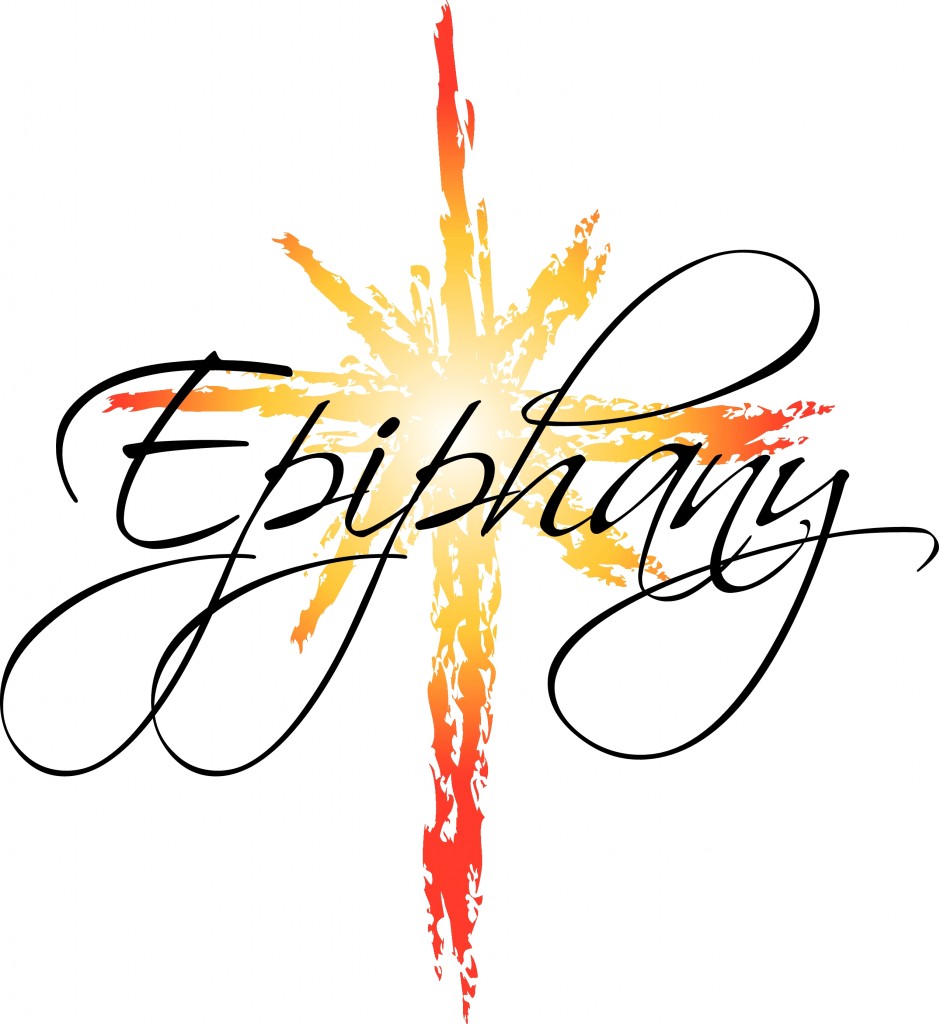
Epiphany Season
The Epiphany Season begins with the epiphany of Our Lord and the baptism of Our Lord. The sanctuary color for the Baptism of Our Lord is white. (White - the purity of the newborn Christ and to our light and joy in him.) Epiphany "season" continues through the next eight Sundays; commonly referred to as the "nth" Sunday after the Epiphany. Green is the sanctuary color for these weeks. This season ends with Transfiguration of Our Lord Sunday for which the sanctuary color is white.
Christmas begins with Christmas Day, December 25, and lasts for Twelve Days until Epiphany, January 6, which looks ahead to the mission of the church to the world in light of the Nativity. The one or two Sundays between Christmas Day and Epiphany are sometimes called Christmastide.
For many Protestant church traditions, the season of Epiphany extends from January 6th until Ash Wednesday, which begins the season of Lent leading to Easter. Depending on the timing of Easter, this longer period of Epiphany includes from four to nine Sundays. In some western traditions, the last Sunday of Epiphany is celebrated as Transfiguration Sunday.
The term epiphany means "to show" or "to make known" or even "to reveal." In Western churches, it remembers the coming of the wise men bringing gifts to visit the Christ child, who by so doing "reveal" Jesus to the world as Lord and King.
The traditional liturgical symbols of Epiphany are usually associated with the Magi. The symbols include either three crowns or a single crown, various portrayals of the Magi or Wise Men, three gifts, a five pointed star, or a combination of a star and crown.
Source: http://www.crivoice.org/cyepiph.html
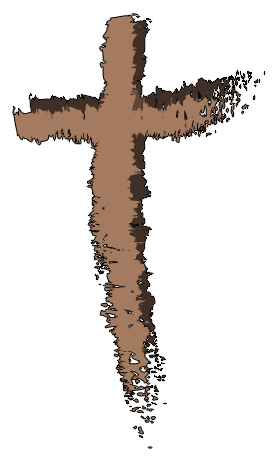
The Season of Lent
Purple is the Lenten season's sanctuary color. Purple suggests repentance and solemnity.
Lent is a season of the Christian Year where Christians focus on simple living, prayer, and fasting in order to grow closer to God.
It is a season of forty days, not counting Sundays, which begins on Ash Wednesday and ends on Holy Saturday. Sundays in Lent are not counted in the forty days because each Sunday represents a "mini-Easter" and the reverent spirit of Lent is tempered with joyful anticipation of the Resurrection.
The Lenten period is marked by solemnity and contemplation, and it is common for Christians to fast and sacrifice certain things during this time. Lent is often preceded by a celebration on Fat Tuesday, which is the last day of festivals such as Mardi Gras and Carnival in Brazil.
For Lutherans, who do not hold anything holy outside of Scripture, it is considered a positive but not sacred tradition. Theologian Martin Luther wanted to keep Lent because it reminded Christians of Jesus' sacrifice on the cross.
What does Mardi Gras have to do with Jesus? Mardi Gras means "Fat Tuesday." It refers to the day before Lent starts. Since Lent always starts on a Wednesday, the day before is always a Tuesday. And it's called "Fat" or "Great" because it's associated with great food and parties. In earlier times, people used Lent as a time of fasting and repentance. Since they didn't want to be tempted by sweets, meat and other distractions in the house, they cleaned out their cabinets. They used up all the sugar and yeast in sweet breads before the Lent season started, and fixed meals with all the meat available. It was a great feast!
Why ashes? In Jewish and Christian history, ashes are a sign of mortality and repentance. Mortality, because when we die, our bodies eventually decompose and we become dust/dirt/ash/whatever. Repentance, because long ago, when people felt remorse for something they did, they would put ashes on their head and wear "sackcloth" (scratchy clothing) to remind them that sin is pretty uncomfortable and leads to a sort of death of the spirit. This was their way of confessing their sins and asking for forgiveness.
Source: http://peopleof.oureverydaylife.com/differences-lent-between-catholics-lutherans-4307.html
Source: http://www.upperroom.org/lent101
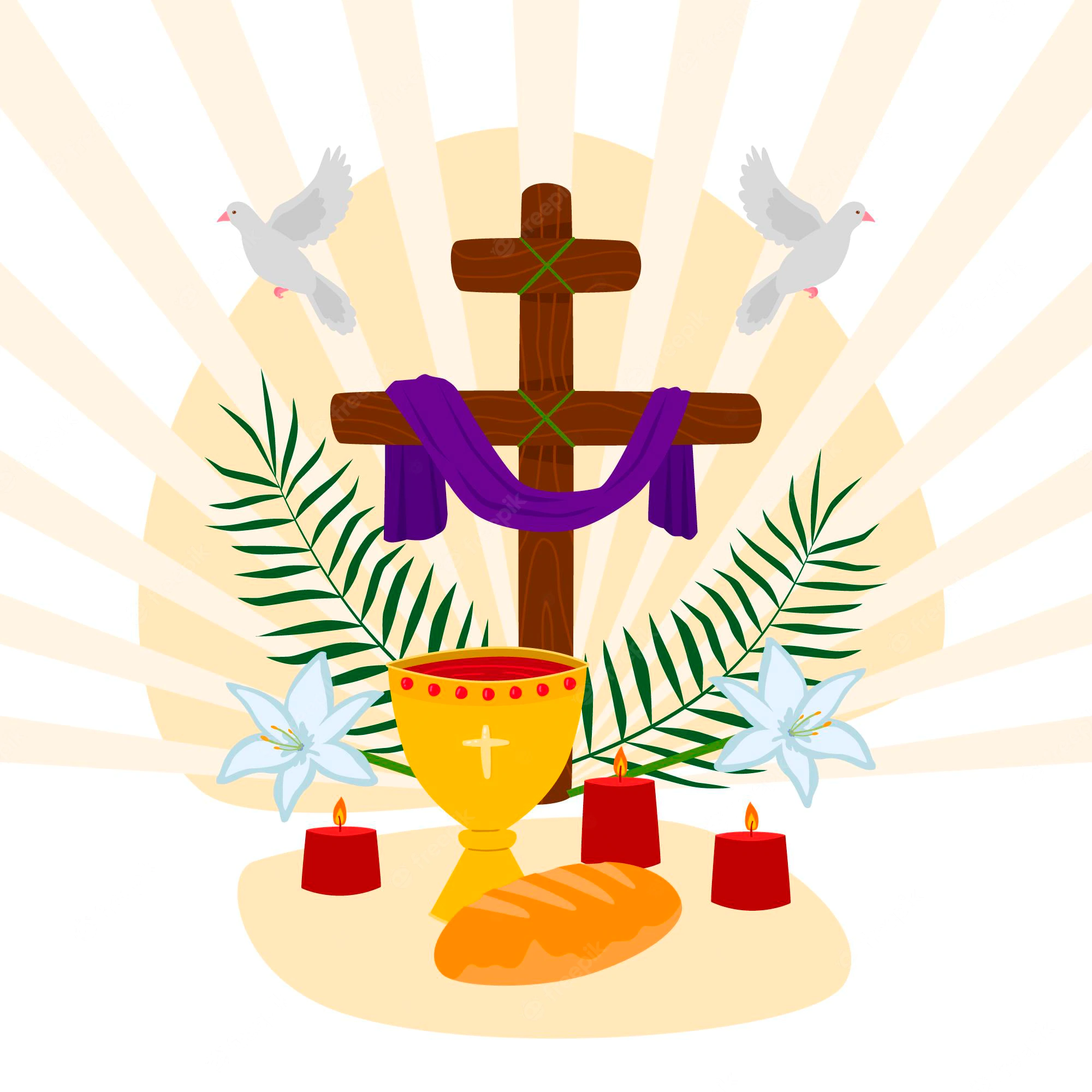
Holy Week
Beginnng on Palm Sunday, Holy Week is the week between Lent and Easter.
It begins with Jesus' truimphant ride into Jerusalem to the praises of the people and the songs of Hosanna! He rides the donkey, the symbol of the victorious king, to the cheers of the crowds. Then the week progresses into the Passion story, the gathering for the Passover on Maundy Thursday, the prayer in the garden, the betrayal and arrest, the cries for crucifixion on Friday and the sentence of death to end the week in Jesus' burial, sealed in the grave. During the first four days of Holy Week, the sanctuary color is burgundy. The sanctuary color for the remaining three days of Holy Week is black.

Easter Season
The Easter Season begins with Easter Day for which the sanctuary is adorned in gold. White is the sanctuary color for the rest of the Easter Season. (White - the purity of the newborn Christ and to our light and joy in his resurrection. Gold - representing our risen Lord.)
Day of Pentecost: Red as the color of fire is used on this day when we remember the tongues of fire descended on the crowd in Jerusalem. In contrast to the color of scarlet, Pentecost’s red is a bright color.
Easter ends, after fifty days of rejoicing, as we celebrate the next festival of Pentecost.
Source (for meaning of the sanctuary colors): Worship Formation & Liturgical Resources
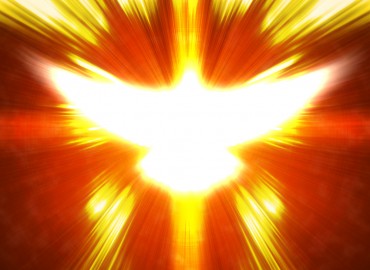
Time After Pentecost
The time following Pentecost is known as the Time After Pentecost. Time after Pentecost begins on the Monday following Pentecost and continues through Saturday afternoon before the first Sunday of Advent, some five to six months later, always including the entire months of July, August, September and October and most or all of June and November (some years include small portions of May and December). The last Sunday before Advent is celebrated as Christ the King Sunday. Sundays in this season are typically refered to as the 'n'th Sunday after Pentecost.
The 23 to 28 Sundays after Pentecost are often used to focus on various aspects of the Faith, especially the mission of the church in the world.
The sanctuary color for the season is dark green, although other shades of green are commonly used. Green has traditionally been associated with new life and growth. Even in Hebrew in the Old Testament, the same word for the color “green” also means “young.” In Christian tradition, green came to symbolize the life of the church following Pentecost, as well as symbolizing the hope of new life in the resurrection.
White is the sanctuary color for Holy Trinity Sunday and for Christ the King Sunday.
However, many churches introduce variety into the color scheme during this part of the year. Some churches use colors that match the décor of the church, so that the special seasons of the church year are marked by a change of color from the ordinary.
Source: http://www.crivoice.org/cyordinary.html
Source: Lutheran Book of Worship